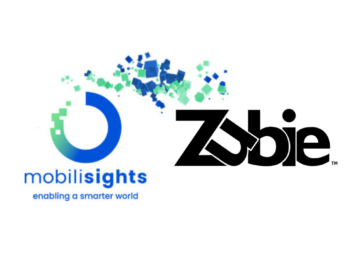
Communicating to your employees that their location and driving behavior is being tracked can be an uncomfortable conversation. Let’s face it – nobody likes to be tracked. Even if your employees are not doing anything wrong – and most aren’t, being tracked feels like an invasion of privacy.
With that said, vehicles are a huge cost for most businesses, and therefore, a risk that requires mitigating. Without information on how drivers are driving, there’s no ability to improve their behavior. As a business owner, the last thing you want to see is anyone wasting fuel and damaging the vehicles — ultimately costing the business money and increasing the risk of liability. Examples of simple behaviors that cause vehicle damage or inefficiencies include hard braking, rapid acceleration, wasteful idling, and speeding. By monitoring driver behavior reports, you can evaluate how drivers are performing in the field and at their jobsites.
Simple track and trace solutions can tell you where your vehicles are, but they don’t give you the data you need to improve business operations and driver performance. So, making sure you have an advanced telematics solution (like Zubie) is a key to actionable improvement. The RIGHT telematics helps you protect your vehicles, while at the same time, optimize your business.
Here are a few simple tops on how to talk to your drivers about GPS tracking without having them feel like big brother is watching their every move:
Explain the Big Picture
The first step is communication. Have an all-hands-on-deck meeting with your drivers. You’ll want to explain how the company is using a fleet tracking system to monitor vehicle health and driver performance. Demonstrate what items you’ll be paying attention to and then discuss why you’re paying attention to them. Use some of Zubie’s feedback features as methods to reinforce your message. Items like the Leaderboard and other Dashboard features and reports were designed with this purpose in mind.
Drivers will understand your actions if you show them how those actions impact the business. It provides a reason. People always seek an answer to “because ….” When you go over behavioral items like hard braking and rapid acceleration, connect the dots for them. Demonstrating how it vehicle health drives up costs is a great first step. If you want, you can relate it to how it could impact wages and salaries (or bonuses), even better – the more you spend on fixing vehicles, the less there is to spend on incentives. Speaking of incentives…
Create an Incentive Program
Rewarding the right behavior shows that your tracking program isn’t punitive. Creating a competition around driver behavior can be a fun way to get the behavior you’re looking for. And the incentives don’t need to be expensive. Offering a cash bonus is great, but an extra vacation day can be just as effective. An engraved plaque on the wall or a framed picture can be a great ego boost. Whatever the reward, make sure the driver feels it’s valuable, otherwise you won’t get the reaction you want.
You can also divide drivers into teams, and whichever teams performs the best, gets a larger reward. Using teams can be beneficial, because they can hold each other accountable for their success and failure. It takes the burden off of you in some cases and creates a more organic performance improvement. Remember, free pizza isn’t just motivating for college students!
Ultimately, coaching your drivers on the right behavior using telematics data can be a win-win for you and your employees.
Have One-on-One Meetings with Drivers
The old axiom “praise in public, criticize in private” is applicable here. You’re probably already meeting with your drivers individually on a regular basis, whether it’s once a month or once a quarter to discuss customer reviews of their work, how they’re performing on the job, etc. But it’s also a good time to include driving performance. Show them the measurements in your fleet tracking system and show them how it is hurting or benefiting the company.
By holding them accountable and discussing how you’d like to see improvements (if needed), it gives the driver more reason to exemplify good driving behavior. If their driver performance is exemplary, then it’s a good time to give them praise, further encouraging the right behavior.
Without one-on-one meetings, it’s hard to hold drivers accountable and it becomes harder to enforce the behavior you’d like to see. For more information about holding one-on-one meetings, check out this article by the Harvard Business Review.
Tracking Driver Behavior – A Win-Win
While it might initially be uncomfortable, the benefits of telematics far outweigh the challenges of delivering the message that you are monitoring employee behaviors. Turning telematics into an advantage for drivers also turns telematics into an advantage for fleet managers, operations managers, and owner operators.
If you’re already using Zubie, we’d love to hear your story about how you’re using telematics to improve your business!
And, if you’ve been thinking about telematics, and you’re ready to get your business setup, reach out to Zubie today for your demo, quote and free trial.
